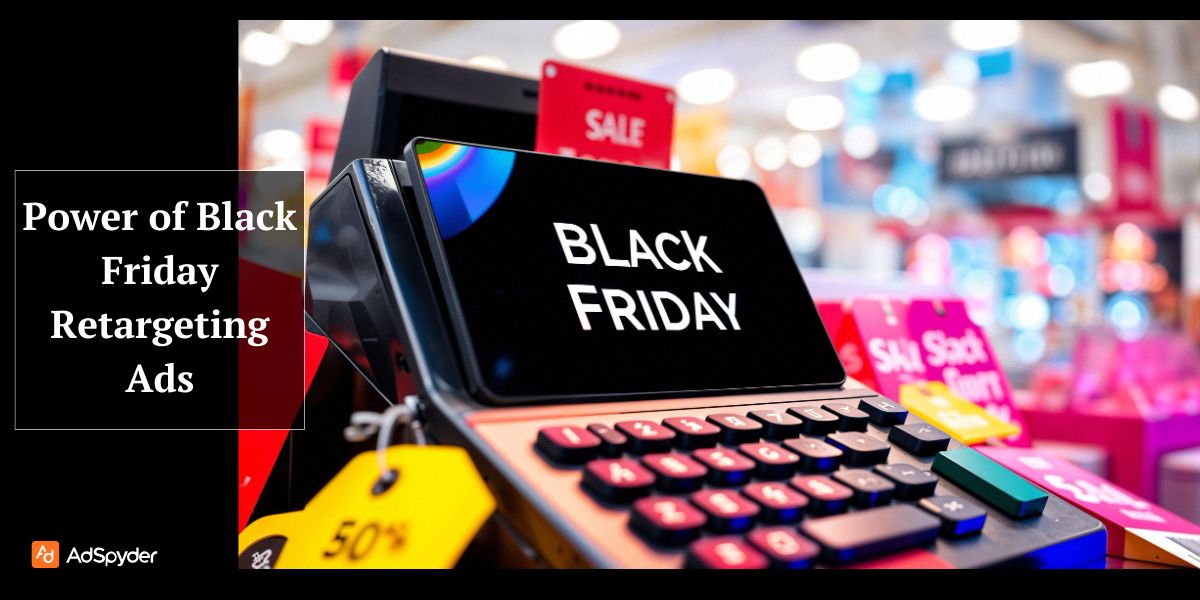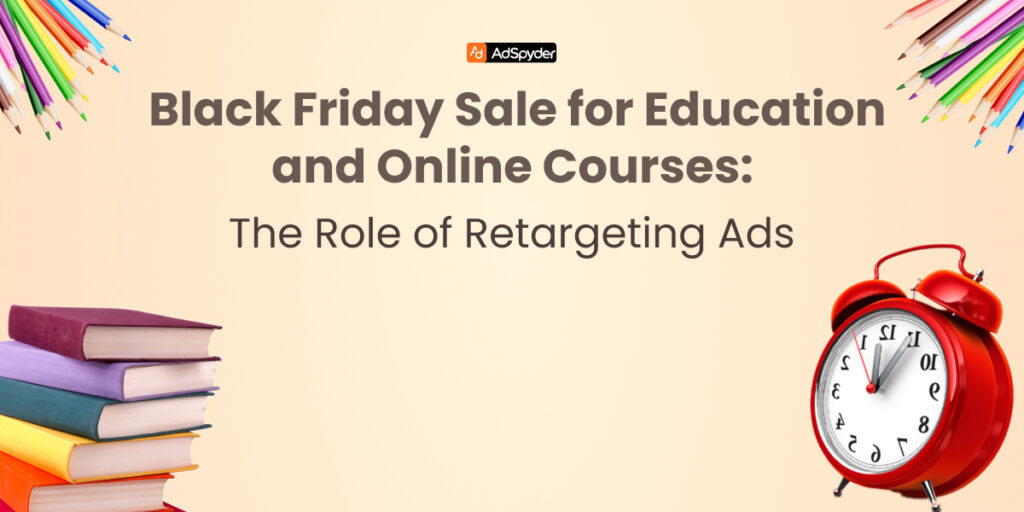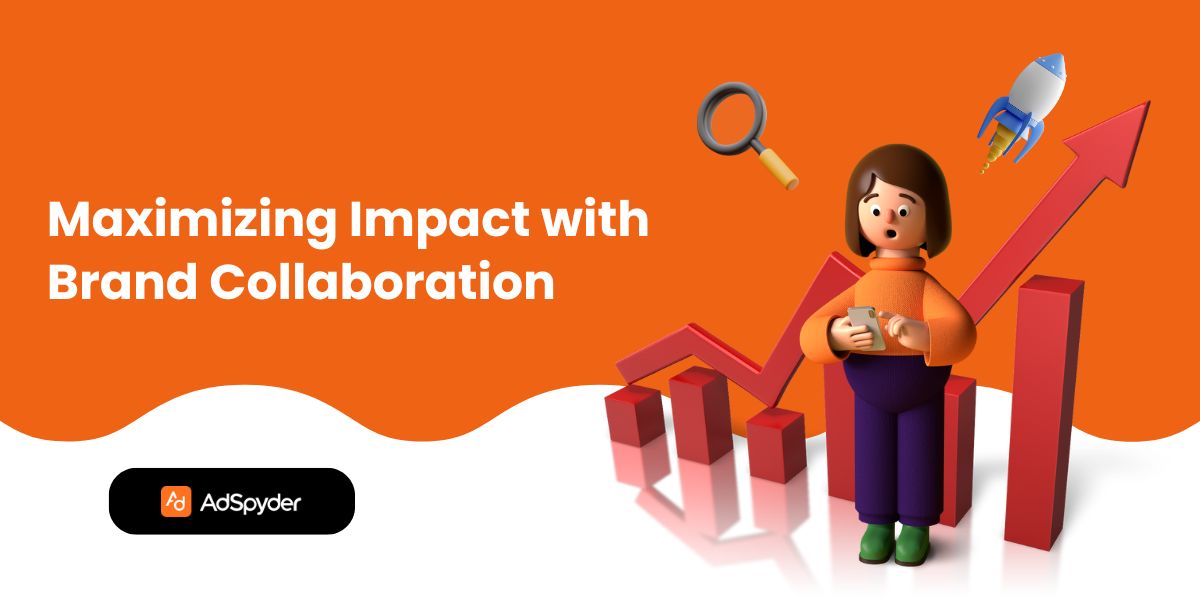Black Friday is an excellent opportunity for online e-learning platforms to boost enrollment and acquire new students as it is a day synonymous with massive discounts and consumer frenzy. In today’s highly competitive landscape, it has come to be something of a competition of marketing strategies to be one among the sea of shouters and to take advantage of the Black Friday shopping frenzy. In this blog post, we are going to discuss how learning platforms can use Black Friday retargeting ads. We will present benefits, strategies for the creation of successful campaigns, and some real-life examples of successful implementations.
Ready to Elevate your Marketing Strategy?
Retargeting ads would mean that you get to display ads to users who, at one time or another, have passed through your website. So, turning leads from Black Friday into converted paying customers can be a great way of using retargeting ads. It increases the chances of users making the sale after being targeted for their interest in courses.
Key Takeaways
- Retargeting ads may work to increase visibility, nurture leads, and even yield some conversions.
- Effective campaigns depend on careful audience segmentation and personalization of the ads.
- Achievement of success will come through tracking the key performance indicators so that one may optimize campaigns based on data.
- Understanding challenges and considerations, the use of retargeting ads may ensure that e-learning platforms get their desired outcomes of Black Friday.
An e-learning platform can shine ahead in its line and drive extreme growth on Black Friday and beyond by using well-based retargeting strategies.
The Power of Black Friday Retargeting Ads

Retargeting ads sometimes are also referred to as remarketing ads, where you serve ads to users who have once visited your website but haven’t completed the action you desire them to do, like purchasing from you. This can be a useful strategy in staying at the top of the minds of target students and increasing your likelihood of conversion.
Benefits of Retargeting Ads for E-learning Platforms
Retargeting ads will, therefore, present a strategic way for e-learning platforms to re-engage their prospects after they have previously interacted with their website or applications. E-learning platforms can stimulate even higher enrollment rates and keep the brand fresh in front of learners by offering personalized ads.
- Increased brand visibility: Retargeting ads enable your brand to stay in the prospect’s mind even when the customer is no longer on your website. This can also increase awareness and recognition of the brand, and make the platform more memorable.
- Improved lead nurturing: You will continue to nurse those leads who show interest in your courses. You’re sending messages to the person which is relevant to them, thus raising the chances of conversion.
- Higher conversion rates: Retargeting ads remind potential students of your courses and their associated benefits, thus making it probable that they will make a purchase. This translates to better enrollment rates and more revenue.
- Cost-effective: Retargeting allows one to reach clients at a cost-efficient rate. Target specific demographics and interests to ensure you reach the right audience; it helps you squeeze your marketing budget to its maximum, or gets out of it what is worthwhile.
The power of retargeting ads brings out the most potential from targeting potential students to ensure high enrollment on Black Friday for e-learning platforms.
Discover More: Black Friday Electronic Ads
Creating Effective Black Friday Retargeting Ads
Even while formulating an efficient retargeting campaign for Black Friday, you should consider such strategies as the following:
Define Your Target Audience
The first step in determining your target audience is to define what kind of people are likely to benefit from what you have designed for your e-learning platform, in terms of age, level of educational attainment, professional background, learning goals, and the actions performed online.
- Identify your ideal student: Who are you trying to reach? Consider things like age, interests, location, education level, or even their type of employment.
- Create buyer personas: Create profiles of your ideal students to get insight into their needs, preferences, and pain. This will then enable the proper messaging and targeting for your audience.
Segment Your Audience
Segment your audience based on factors like preference, interest in courses offered, demographics, or engagement levels. This can help you develop more targeted and relevant ad campaigns that speak to each segment; consequently, conversion rates improve.
- Segment based on behavior: Take the segmentation process up one more notch by segmenting your audience based on how they are operating, maybe which pages they have visited, what courses they have viewed or for how long they’ve spent on the site. This will allow you to target users who are interested in your courses.
- Segment based on demographics: Segment according to the demographic basis such as age, gender, location, and educational qualification. This will appeal specifically to a target audience who would be interested in your course.
Craft Compelling Ad Copy and Visuals
Craft attention-worthy ads with great copy and visuals regarding the value of an e-learning course. Use words or language that are enticing, with clear benefits and interesting imagery content that gets attention and interest. Your messaging is speaking directly to the requirements and needs of your audience.
- Highlight Black Friday deals: Highlight specials and savings on that Friday with strong calls to action to get students interested and enrolled.
- Use persuasive language: Use language that appeals to the benefits of your courses and helps in fulfilling the needs and pain spots of your target audience.
- Create visually appealing ads: Use high-quality images and videos to catch the eyeballs. Relevant visuals of the courses or the industry could be ads.
Tailor Your Ads to Different Stages of the Buyer’s Journey
Target your advertisement according to the buyer’s journey, which is ready, considering, or has reached the point of deciding. For example, you shall give introductory offers for the awareness stage while giving course testimonials or success stories for those close to the point of making the decision.
- Awareness stage: For people who have recently discovered your brand and courses, you would want to make ads that basically introduce your platform and the benefits of online learning.
- Consideration stage: For users who’ve accessed specific course pages or downloaded free resources, generate ads relevant to courses or provide additional information.
- Decision stage: For those just above the decision point, explain to them how much value your courses hold for them. Implore them to take action.
See It Here: Automative Ads for Black Friday
A/B Testing and Optimization

Implement A/B testing to analyze two or more different versions of your ads, such as varying headlines, images, or CTAs. Analyze performance data to understand what elements drive better engagement and conversions and keep optimizing the campaign to gain results.
- Experiment with different ad variations: This involves testing different variations of ads including different copies of ads, visuals, and targeting options on what works for a given audience. This would further help in the optimization of campaigns for the highest possible results.
- Analyze performance: Adjust your retargeting campaigns by tracking some KPIs, like click-through rates, conversion rates, and cost per acquisition.
- Make adjustments: Understand that you need to continually analyze your performance data and tweak it in the campaigns as is needed. This will enable you to produce a better result and even maximize your return on investment.
Using such strategies, you will easily create a very effective retargeting campaign that can lead to the conversion of enrollment while adding power to your Black Friday sales.
Retargeting Strategies for Different Stages of the Buyer’s Journey
Retargeting can be one of the most powerful tools to engage potential students along the buyer’s journey at different levels. A higher probability of conversion can be attained if the ad messaging is tailored for every stage.
Awareness Stage
Introduce your brand and create a sense of interest. Run retargeting ads that remind the visitor about your e-learning platform and all it uniquely has available. Create highly attractive ads, especially in terms of free resources such as trial courses, eBooks, or blog posts.
- Goal: Introduce your brand and courses to unknown target students.
- Ad content: Highlight the benefits of online learning and the value of your courses. Use general ads that feature your website’s features and benefits.
- Examples: Positive testimonials of some students, the course in demand advertisements, or free download promotions, such as an e-book or a webinar, to name but a few.
Consideration Stage
Offer retargeted ads that reflect the value of your platform: show course features, instructor credibility, or success stories with actual students. Give them comparison ads and limited-time offers to actually push them into using and utilizing more of your e-learning content.
- Goal: Provide more information about the courses you are offering to leads who are interested and clear their questions.
- Ad content: Promote courses related but mention some key features and address common questions or concerns. Use targeted advertising based on the specific pages that have been visited on your site.
- Examples: Examples would be retargeting ads to specific course pages, free trials, or blog posts on a particular course related to your courses.
Decision Stage
Target users who have already made up their minds and need a last push and some reinforcement: retarget them with ads that include testimonials, course completion rates, or money-back guarantees; urgency through time-limited offers, enrollment deadlines, etc. They are to be convinced and moved on to being paid students after all remaining objections have been replied to.
- Goal: Ensure the leads are converted into paying customers, with the last push you give them so that they can buy from you.
- Ad content: Provide time-limited discounts, special offers, or reviews from happy learners. Add a sense of urgency or scarcity to get people to act today.
- Examples: Retargeting ads that will offer a person more benefits of signing up now, remind them of limited-time deals or promotions, and have recent graduates as testifiers.
Using a retargeted ad best applies to the specific stages of the journey, so there is more relevance and better use of campaigns. The result of this will be the high conversion of leads to paying customers and a maximum return on investment.
Must see: Video Ads for Black Friday
Measuring the Success of Retargeting Ads
Track KPIs to analyze your data for measuring the success of your retargeting campaigns. These KPIs must be checked to make your campaign better:
Key Performance Indicators (KPIs)
Analyze the effectiveness of your retargeted ads through tracking, by KPIs with click-through rates, conversion rates, CPA, ROAS, and other key metrics such as engagement, bounce rates, or returned users. By checking KPIs on a regular basis, you will be analyzing the performance of retargeting campaigns.
- Click-through rate (CTR): This measures the percentage of users who click on your ad after viewing it. All-high CTR means your ad is interesting and relevant for your target audience.
- Conversion rate: This is the percentage of individuals that convert from clicking on the ad to being a paying customer. One other great key metric on how effective a retargeting campaign is.
- Return on investment (ROI): Profit one generates from retargeting campaigns as opposed to the cost incurred. A good ROI shows that the campaign is generating positive returns.
- Cost Per Acquisition (CPA): Average cost to acquire a new customer, one acquired through your retargeting campaigns. Lower CPA means the more conversion-friendly your campaigns are reputed.
- Frequency: This is defined as the average number of impressions one ad receives per user. While frequency may be important for building recall for a brand, you intuitively want to avoid violating the principle of ad fatigue.
Tracking and Analysis
By checking KPIs regularly, you will be analyzing the performance of retargeting campaigns. You will follow user behavior, engagement, and conversion paths in Google Analytics or Facebook Ads Manager to see which ads work and which to improve. This knowledge refines targeting and messaging strategies.
- Use analytics tools: You can see your retargeting campaigns in progress using analytical tools from Google Analytics and the tools of specific platforms. This kind of tool can offer insights into audience behavior, and analytics can be effectively used in ad effectiveness analysis.
- Analyze data: Conduct data analysis regularly for trends and areas of improvement, making decisions using data derived from the analysis. Search for patterns in KPIs and comparisons of the performance of variations of adverts.
- A/B testing: It is an experiment whereby various ad variations are tested to find out what works best for your audience. This can help optimize your campaigns for the greatest impact and improve results.
Optimizing Campaigns Based on Data
This step incorporates learning from the data analysis insights to optimize retargeting ads. Target the ad copy, visuals, audience segment, and budget allocation based on how the performance has been after their implementation. Use A/B testing for various elements of the ad and eliminate low performance; scale up others with better engagement and conversion.
- Adjust targeting: You need to set more precise targeting criteria to show your message to the most interested audience. Target users who have visited specific course pages, or downloaded free resources from you.
- Improve ad creative: Create more effective and interesting ad copy and visual work. This will be supported by strong calls to action and emphasis on the advantages of your courses.
- Optimize bidding: Modify the strategies of bidding in a way that you have optimized your return on investment. This can even be achieved by the adoption of automated as well as manually made tactical bids with which you can optimize the bids made.
- Test different landing pages: You can create different landing pages that are the best converters and relevant to your retargeting ads. You might see an increased conversion rate.
With access to campaign data, you will be able to make effective decisions and would be able to optimize your retargeting campaign for better performance.
Challenges and Considerations
Even though retargeting ads are indeed a very handy tool in e-learning platforms, however, there are challenges and considerations that are as follows:
Ad Fatigue
Ad fatigue describes a condition when users frequently see the same retargeting ads, which generally reduces engagement and can become annoying. Anticipate this with regular refresh of creatives, adjustment of messaging, or providing new promotions for them.
- Overexposure: A customer may associate the same ad he or she is exposed to for a long period of time to be annoying, thereby diminishing its effectiveness. Users tend to get annoyed or ignore the advertisement if they view it too many times.
- Variety: Maintain your advertisement message and targeting strategy so that not more than one advertisement is viewed and the interest of the viewer is not lost. It could be through diverse ad creatives, targeting different segments of your audience, or regular rotation of ads.
Privacy Concerns
Retargeting ads can raise questions on privacy issues for users. They may be apprehensive about how they feel about their data being tracked and used. Respond to this by providing transparency in clear data collection practices by keeping the availability and visibility of your privacy policy.
- Data privacy: Ensure you respect the data privacy regulations such as GDPR and CCPA. Be sure that you have gotten consent from users over their data and handle the data responsibly.
- Transparency: There should be transparency by which retargeting is being done with the user. In other words, tell them you are retargeting them and how you’re using their data. This will help build trust rather than go against users.
Technical Challenges
While implementing a retargeting campaign on an e-learning platform would come with its technical aspect. These include pixel setup and tracking configuration, cross-device tracking accuracy, and so on. There are also complications associated with setting cookies limited by browser updates or user settings.
- Cookie management: Configuration of your website and retargeting platform for effective cookie management. The overall strategy associated with cookies is that they are used in tracking user behavior. It tracks a visitor as he or she browses your website. The correct configuration of cookie management is what will make your campaign work effectively.
- Integration issues: Integrate any technical issues or integration problems that you may likely face once you install your retargeting campaigns. Ensure that your retargeting platform integrates well with your website and other marketing tools.
Addressing Challenges
To address these challenges, some of the possible strategies include the following:
- Frequency capping: Avoid repetition by the number of times a user views your ad, since it may lead to ad fatigue. Your ad may lose relevance and interest due to this frequent display.
- Personalized targeting: Advanced targeting options help personalize your ads and, thus, make them relevant for each user. This can then increase engagement and conversion rates.
- Data privacy compliance: Ensure the retargeting practices you adopt are data privacy compliant. Therefore, ensure that you understand the kind of explicit consent expected from users and the data security measures you adopt.
- Technical support: You can get technical support from your retargeting platform provider if the issue involves the service provider. This way, you can solve problems yourself in case issues arise.
Such challenges addressed can make e-learning platforms produce sales from retargeting ads during the Black Friday season.
Learn More: Dynamic Ads for Black Friday
Case Studies
Coursera
The MOOC platform, Coursera, retargeted ads very successfully on Black Friday to steer enrollments. They targeted the website visitors and the people who downloaded free courses. Coursera reminds them of the limited-time discounts and special offers available.
- Strategy: Coursera applied retargeting ads based on the interests and previous activities of users through its interface. Also, provide Black Friday offers and bundled courses to come up with a sense of urgency.
- Results: The retargeting ads campaign on Coursera has a good effect on increasing enrollments by selling more products and optimizing revenues during Black Friday. Indeed, they have reached a targeted audience, allowing potential students to become real-time paying customers.
Udemy
Another such popular online learning platform was Udemy. It used retargeting ads to target users who abandoned their shopping carts. The company used specific personalized discounts and reminders to tell the users that they should complete the purchase.
- Strategy: The strategy taken by Udemy was targeting users who had added courses to their cart but didn’t complete the checkout process through retargeting ads. Also, they sent exclusive deals and limited offers to customers so there would be an urgency for completing the purchase.
- Results: With retargeting campaigns, Udemy has thus been able to recover abandoned carts and increase conversions. They have thus contacted the users who would perhaps have missed the Black Friday deals.
edX
edX, a not-for-profit online education platform, employs retargeted ads to those who have completed courses but have not returned. It reminds them of special deals and new courses, thereby ensuring repeat business.
- Strategy: edX used retargeted ads targeted at its alums and past students. The company had made recommendations based on their historical enrollment patterns and interests.
- Results: So far, retargeting campaigns have helped edX drive repeat business with a substantial increase in customer lifetime value. That is, they could retain existing students and bring them back to the platform for other courses.
FAQs
Retargeting ads are used to reach customers who visited your site but didn’t convert. They remind users of their interest, increasing the likelihood of purchase by staying top-of-mind.
They re-engage prospects, improve brand visibility, and increase enrollment by reminding potential students about course benefits and exclusive offers.
Segmenting based on behavior, demographics, or engagement levels allows more tailored ads, improving relevance and conversion rates.
Create awareness ads for new visitors, consideration ads for those browsing specific courses, and decision ads with testimonials and discounts for near-converters.
By testing different elements like headlines, visuals, or CTAs, brands can identify which versions perform best and optimize their campaigns for higher ROI.
Monitor CTR, conversion rates, CPA, and ROI to measure effectiveness and improve future retargeting efforts.
Common challenges include ad fatigue from overexposure and privacy concerns regarding user data tracking. Brands need to refresh creatives regularly and ensure transparency in data use.
Conclusion of Black Friday Retargeting Ads
A retargeting ad campaign may be exactly what your e-learning site requires to supercharge those sales events around Black Friday and turn leads into payers. Target audiences appropriately and construct the most relevant ad content. Examine how effectively your advertising campaign is performing. You will be able to realize maximum ROI from retargeting.




